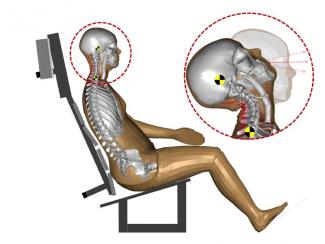Welcome to I Putu Alit Putra licentiate seminar “An Average Female Head-Neck Finite Element Model with Reflexive Neck Muscles”
I Putu Alit Putra is a Ph.D student at the Injury Prevention Group, Department of Mechanics and Maritime Sciences, Division of Vehicle Safety at Chalmers University of Technology. He focuses his research on human body computational modeling, specifically in the field of active neck muscles modeling for the female occupant model. The goal of his research is to develop validated neck muscles model for the female occupant model and to evaluate the effects of neck muscles contraction to the whiplash injury during rear-end car collision. His research is e.g. linked to SAFER’s human body model and the associated project Viva.
Robert Thomson is the supervisor and discussion leader will be Asst. Prof. Dipl.-Ing. Dr.techn. Corina Klug - Graz University of Technology (TU Graz), Austria.
Link to full text of the thesis and the Zoom meeting are available below.
Abstract
Several factors potentially contribute to the risk of whiplash injuries; one of them is the neck muscle activities. Muscle activities in the neck have been shown to influence the head-neck kinematics during whiplash-like rear impacts. Thus, it is necessary to include the neck muscle responses when conducting a study of head-neck kinematics in a whiplash-like rear-impact condition. Therefore, as the first step, the development which focused on the implementation and optimization of a 50th percentile head-neck FE model with active reflexive neck muscles was conducted in the present thesis.
The active muscles were implemented in the existing ViVA OpenHBM, and the work was divided into three studies. The first study concluded that both neck link angular position feedback (APF) and muscle length feedback (MLF) control strategies improved the head kinematics agreement compared to the passive model, but overall, the APF controller performed better. The second study showed that the optimum controller gains and parameters could be identified using optimizations. The final study evaluated different ways to combine APF and MLF controllers. Further study and optimizations are needed to understand the best way to implement and combine MLF controllers with APF controllers.
The combined work increased the understanding of how to model active neck muscle controllers representing human reflexes during whiplash induced rear-impact. The optimization strategy used in the present thesis could be repeated in other head-neck models and in other regions of the human body in future work. In summary, an open-source head-neck FE model that represents a 50th percentile female in stature and mass with active reflexive neck muscle is now available and with future development will be used to study head-neck kinematics and its relation to whiplash injuries.


